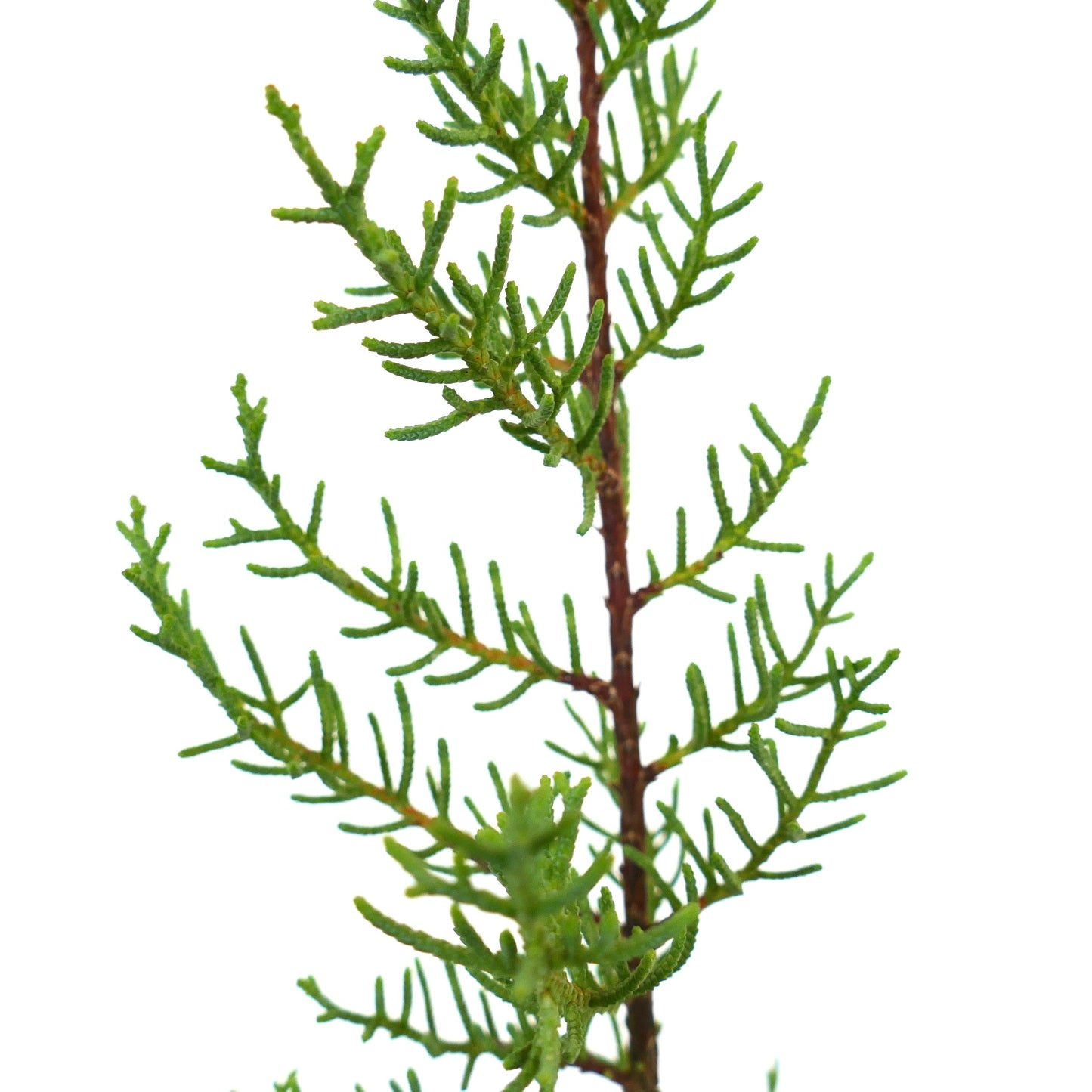Cupressus sempervirens var. horizontalis 50-90cm
Cupressus sempervirens var. horizontalis 50-90cm
Couldn't load pickup availability
Product Description
Cupressus sempervirens, commonly known as the Italian Cypress or Mediterranean Cypress, is a slender, evergreen coniferous tree native to the Mediterranean region. This iconic tree is famous for its tall, narrow, columnar form, with dense, dark green foliage. Italian Cypress trees have been cultivated for centuries and are often associated with the landscapes of southern Europe, where they are used for their aesthetic appeal, as well as for creating natural windbreaks and privacy screens.
Cultivation:
-
Climate: Italian Cypress is well-suited to Mediterranean climates but can thrive in a range of temperate climates. It is hardy in USDA Hardiness Zones 7 to 10, where it can tolerate mild winters and hot, dry summers.
-
Sunlight: Plant Italian Cypress in a location that receives full sun. It thrives in bright, direct sunlight and may become sparse and less dense if grown in the shade.
-
Soil: This tree prefers well-draining soil with a slightly acidic to neutral pH. It can tolerate various soil types, including sandy or rocky soils, as long as they provide good drainage.
-
Watering: During the establishment phase, provide regular watering to keep the soil consistently moist but not waterlogged. Once established, Italian Cypress is somewhat drought-tolerant and requires less frequent watering. Deep watering during dry spells is beneficial.
-
Mulching: Apply a layer of mulch around the base of the tree to retain soil moisture, regulate soil temperature, and prevent weed growth. Keep the mulch away from the tree's trunk to prevent rot.
-
Pruning: Prune Italian Cypress as needed to shape the tree, remove dead or diseased branches, and maintain its tall, narrow form. Avoid heavy pruning, which can lead to sparse growth and affect its natural columnar shape.
-
Fertilization: In most cases, Italian Cypress does not require heavy fertilization. If your soil lacks nutrients, you can apply a balanced, slow-release fertilizer in the spring.
-
Pest and Disease: While generally hardy, Italian Cypress can be susceptible to cypress canker and aphids. Keep an eye out for signs of these issues and take appropriate measures to address them if they appear.
-
Propagation: Italian Cypress can be propagated from seeds or cuttings. Collect seeds from mature cones and sow them in well-draining soil in the spring. Cuttings can be taken in late spring or early summer.
-
Landscape Use: Italian Cypress is a popular choice in landscaping for its elegant appearance. It can be used as a striking specimen tree, a natural screen or hedge, or for creating a formal avenue or entryway. Its tall, narrow profile adds a sense of verticality and sophistication to garden designs.
Italian Cypress is an iconic and elegant tree that can enhance the aesthetics and privacy of your landscape. By following these cultivation tips and providing the right growing conditions, you can enjoy the timeless beauty of Cupressus sempervirens in your garden or property.
SKU:BA-0713-S
Cultivation
Cultivation
Info and Disclaimers
Info and Disclaimers
Plant height: 80-90cm
Pot diameter:
Picture taken on:






